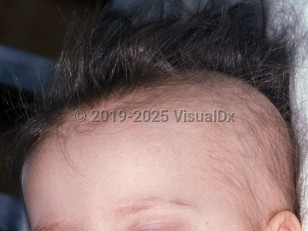Thallium is an ingredient of rodenticides and insecticides. The metal as an ingredient was banned from the United States in the 1960s, but it is still commonly used overseas. Thallium was also a component of older pharmacologic agents used to treat diseases such as ringworm and syphilis, and trace amounts of the metal may still be found in costume jewelry, recreational drugs, radiographic contrast agents (thallium-201) to assess cardiac function, semiconductors, fireworks, and various other products.
Thallium poisoning may be acute, subacute, or chronic in nature. The acute form, which is most common, develops rapidly and is the result of short exposures to high doses. The timeline of symptoms following thallium poisoning is as follows:
- Gastrointestinal / renal – Symptoms develop within 1-5 days of ingestion and include vomiting, diarrhea, abdominal pain, stomatitis, and liver and kidney dysfunction.
- Neurologic – Symptoms develop from 2 days post-ingestion onward and include burning paresthesias (distal > proximal) and motor weakness. The neuropathies are progressive and often involve cranial nerves. Respiratory paralysis, nystagmus, ophthalmoplegia, and visual loss may develop.
- Dermatologic – Symptoms develop from 15 days onward and include alopecia, Mees' lines on the nails, scaling of palmoplantar surfaces, and acne-like lesions. The alopecia is most significant on the scalp but may also involve the lateral eyebrows.
When appropriate treatment is initiated, patients may experience significant recovery from the effects of thallium poisoning. In some patients, resultant paresthesias may not fully resolve, even with treatment.



